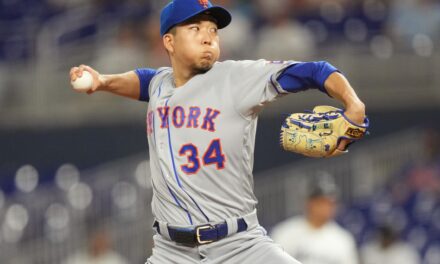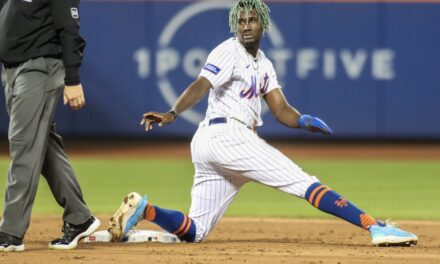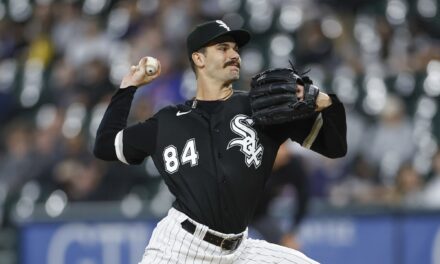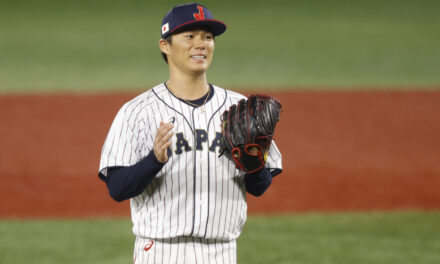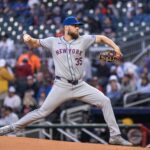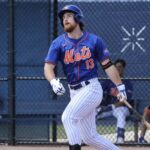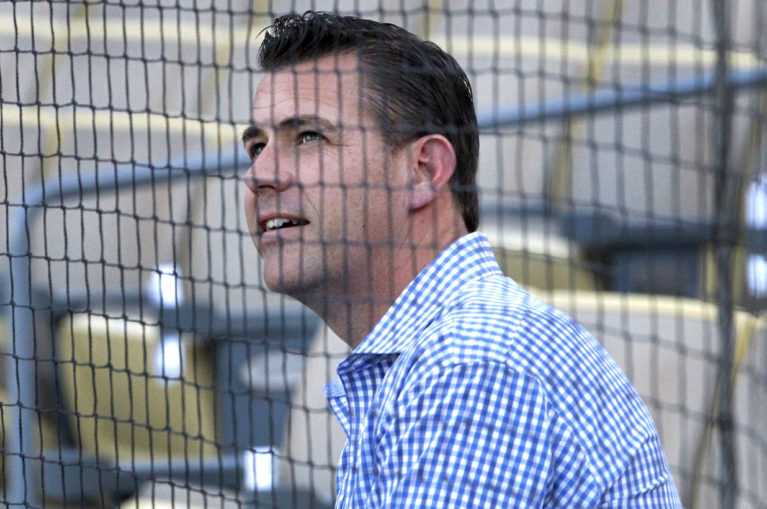
Charles Wenzelberg/NY Post
An MMO Fan Shot by Ron Henry.
During the offseason as a baseball fan, it’s pretty easy to look at the most glitzy of the free agents and imagine their impact on your team, particularly if they’re one of those guys who have terrorized you before. What is sometimes a little harder to see are your own team’s weaknesses, and how much simply improving at the margins of your weakest points can make you a stronger team, even at a fraction of the cost of some of those aforementioned free agents.
I will admit that I was one of those Mets fans that was pretty dubious of our initial hiring of Brodie Van Wagenen, he of former agent status, to take the role of General Manager. Outside of the obvious potential conflicts of interests the role change presented, it was unclear to me what specific credentials BVW would bring to bear in terms of compiling a winning baseball team. At least with another candidate, Rays Senior VP of Baseball Operations Chaim Bloom, I had the expectation of improved analytics and scouting for which he had become known.
Hey – if you’re going to spend like a small market team when in New York City, at least get a guy who knows how to operate like a small market team, right? Now that we’ve had a few months to evaluate the new General Manager, I would first say that I love that he had the confidence and bravado to execute his vision of a team, without the egotistical over-confidence to realize he’s not the smartest person in the room…but he wants to make sure the smartest people in the room are working with him to build a better baseball team. That seems to have manifested itself in three major changes for the 2019 club to date:
1. Bullpen Overhaul. A lot of pitchers look better when they get shifted into roles more meaningful for them, so locking up two elite closer-type arms to work the eighth and ninth, as well as a solid lefty dependable for late innings should do wonders. It also helps to add a lot of depth through pitchers on minor league contracts. Go back and look at the Brewers bullpen and minor league contracts to start 2018 and where they ended up at the end of the year – you might be surprised, and that was probably the best bullpen in the NL.
2. Increased focus on leveraging analytics. Much has been made about a recent publicized article about how the Mets don’t scout below full-season A-ball and how it may take up to a year to remedy that. While I hope the wheels are already turning on the front, there is nothing stopping us from analysing current team and developing strategies that accentuate the strengths and hide the weaknesses. Which also leads to…
3. Improving the position player depth. The largest struggle of the 2018 season was actually not a lack of star-level players. Michael Conforto had a fantastic second half. Jacob deGrom won the Cy Young, and Zack Wheeler might have been better after the break. Brandon Nimmo surprised everyone out of the gate and Jeff McNeil had nearly 2.5 WAR in less than half a season. The problems of 2018 were an over-usage, and dare I say, reliance, on players with little to offer on either side of the ball. Jose Reyes registered -1.0 WAR over 251 PA with a 62 wRC+ and -7 DRS. Adrian Gonzalez put up -0.3 WAR over 187 PA with a 84 wRC+ and -2 DRS. Jose Bautista actually wasn’t terrible with the stick but gave a lot of it back on the other side of the ball on his way to 0.4 WAR with the Mets in 302 PA. Austin Jackson, Dominic Smith, Luis Guillorme…you get the drift.
What has struck me this offseason is I get the distinct impression that BVW is trying to build the “Dodgers East” on a somewhat more truncated budget. The Dodgers were pretty unique in 2018 in that they had many star-level players pretty much stuck in platoons by season’s end due to their unbelievable amount of depth. Below is a table of team offensive output last year based on Fangraphs’ wRC+, which attempts to measure the impact of run creation, all things being equal. While it is not a perfect statistic, it is a good way to do an apples-to-apples comparison of rough offensive output.
1. Dodgers – 111
2. Yankees – 111
3. Red Sox – 110
4. Athletics – 110
5. Astros – 110
6. Rays – 105
7. Indians – 104
8. Mariners – 101
9. Nationals – 101
10. Blue Jays – 101
18. Mets – 95
Two things jump out at me about this table. The first is that there was a clear division between the best five offensive teams last year and everyone else. Unsurprisingly, all five of those teams clinched playoff spots relatively early last year (barring the weirdness of the Dodgers W-L record) and were mostly in a Battle Royale to figure out who was the best team in baseball.
The second, and more germane point to this discussion, is that there are only two NL teams in the top 10, and one of them (Dodgers) was the best offensive team in the league.
Why is this particularly interesting? As you may well know, one slight hindrance to offensive production in the National League is that while the Dodgers were sending Clayton Kershaw and Rich Hill to the plate, the Red Sox were sending J.D. Martinez. Frankly put, there are 250-450 plate appearances a year that NL teams have to give to a pitcher, which usually nets to about a goose-egg in wRC+, while AL teams get to send out someone whose sole focus, day in and day out, is simply to hit a baseball. And, yet, this bears repeating: the Dodgers were the best offensive team in the league in 2018 by wRC+.
I had to go all the way back to 2000 to find a year in which an NL team lead the league in wRC+ (Giants, 112), and that team had a superhuman statistical player by the name of Bonds who was just starting a run of five straight years with an OPS over 1.100. And you may also remember that going into the season last year, Corey Seager was generally regarded as the Dodgers best offensive player. Corey Seager had 115 PA last year before succumbing to injury. So what are the Dodgers doing? They are accumulating and deploying depth to a ridiculous degree. And that looks to be just what BVW is trying to emulate.
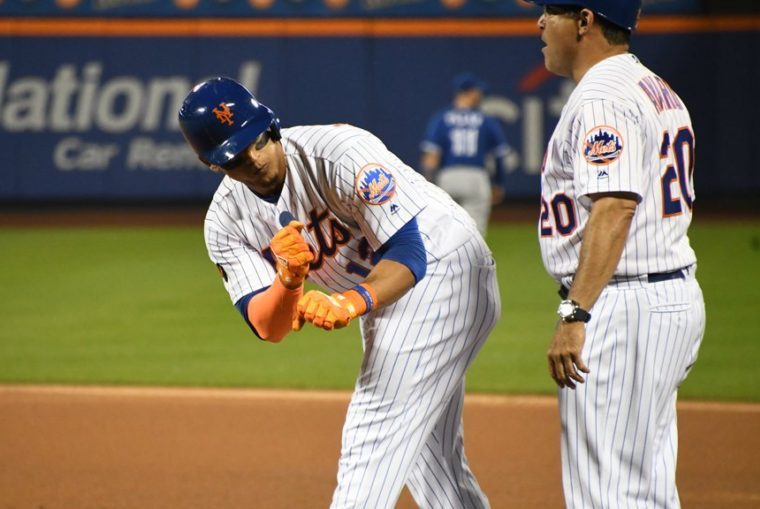
On the boards here at MMO, I see a lot of armchair general managing about how certain contracts need to be jettisoned, particularly when skills seem to be duplicated (looking at you, Juan Lagares) or player’s roles seem to be blocked by less effective veterans (hey, Todd Frazier and Jeff McNeil), or the belief that because guys were hurt before they have no value today and we should trade them for a bag of baseballs (Welcome to the show, Travis d’Arnaud).
I’m here to say that with an analytical focus, there is a place for all of these players and they make the Mets that much stronger. By reviewing the platoon splits of the players we have accumulated and keeping an eye toward defense, here is how the Mets position player deployment might look in 2019 if we use some of that newly developed analytical team to field a Dodgers-like type of offense.
The Experiment
I decided to complete an exercise to simulate a realistic output of 2019 based on what we know today about the Mets. I decided to use wRC+ to measure the output of all players, and to use career splits to determine their effectiveness. Some may argue that point, but I wanted to be careful to not overreact to one 2018 outlier that happens to be fresh in our minds for players that have a demonstrated long-term capability. That’s probably going to make some players look better than they otherwise would (Frazier, d’Arnaud) and some players worse (Lowrie, Rosario).
I then decided to break out the team into 4 distinct line-up types, based on the quality of the pitching match-ups on a given day. Beyond just grabbing players with differing platoon splits, BVW has placed a focus on acquiring above average defensive players who augment run prevention as well. As such, I split the lineups into the grid as shown below, based on the handedness of the opposing pitcher and then a relative-rating of the Met’s starter tendencies (flyball v. groundball). As a Mets starter has higher GB/FB tendencies, we would deploy a “grounder” lineup, and a starter with a lower GB/FB ratio would be supported by the “flyball” lineup.

I broke out plate appearances in the following manner: I assumed on average that out of every 8 starters faced, roughly five would be RHP and three would be LHP. This seems to be a roughly fair split of what is seen in the league today. I assumed the force-ranking of Mets starters would lead to roughly equal AB between flyball and groundball pitchers. I then assumed roughly 17 equal shares (mostly because it made PH appearances and the like work out roughly correctly) of plate appearances, with 16 shares going towards these “starter” alignments, and the rest being PAs that can be spread across all players based on late game changes such as pinch hitting, and defensive/offensive replacements. By no means do I think that 94 percent (16/17) of plate appearances will come against opposing starters, but I do think it is a fair representation of how long average offensive players are deployed in a game and due to a relative dearth of quality left handed relievers today, the skew towards more RHP on the starting side should somewhat be reflected in the late game as well.
The last step I did was to take a more recent study on expected PAs per position in the lineup over the course of the season and then allocated them to each squad accordingly. I attempted to build lineups focused on a much improved defense while also appropriately balancing the platoon splits of the lineup so that the above assumptions regarding 94% of plate appearances are likely to hold, and allow for strategic changes by Mickey Callaway and crew. Additionally, I made sure that no player appeared in more than 3 of the squads to allow for appropriate planned rest and leveraging the depth the team now has. wRC+ shown is based on the relative platoon split of the opposing starter. Where career data did not exist for Peter Alonso, I used a 85/105 split vRHP/vLHP as a placeholder due to his rookie status and profile. You will see that most players hold down a pretty regular position when they get the start outside of our two swiss army knives: Jed Lowrie and Jeff McNeil.
Below are the results by squad, and finally, an estimate of plate appearances by player.
Squad A: RHP Opposing Starter, Mets “Flyball” formation
This squad is probably going to be a fan favorite as it gets young guns McNeil and Alonso into lineup and sends current goats Todd Frazier, Travis, d’Arnaud, and Juan Lagares to the bench. The defensive focus is on keeping above-average defenders Broxton in CF and Conforto in LF while Nimmo brings mediocre defense in right. Ramos and Alonso bring some righty balance to the lineup when groundballs are minimized.
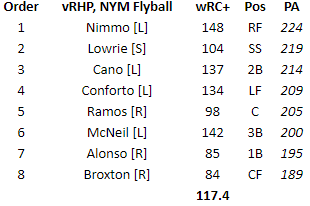
Squad B: RHP Opposing Starter, Mets “Grounder” formation
Staying lefty heavy, this lineup focuses on fortifying the infield defense while keeping the top 4 relatively unchanged (outside of Nimmo moving into center while Lowie goes to third). There is not much drop-off from Ramos to d’Arnaud vs. righties so this is where d’Arnaud will get the bulk of his starts, while Frazier comes in to bolster the infield defense. (You could also swap Frazier to 3B and move Lowrie and Cano to the right side of the infield in either order should you so choose). Rosario’s weaker 75 wRC+ is minimized from the 8 (or possibly) 9 spot in the order vs. a righty while making sure his glove is on the field for a “groundball” starter. Even with Rosario’s bat, this is still the best projected offensive squad from a wRC+ perspective.
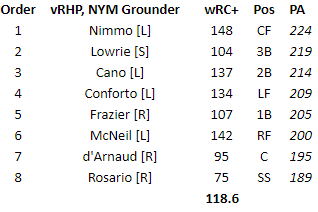
Squad C: LHP Opposing Starter, Mets “Flyball” formation
The first lineup that highlights why we keep talking about looking for another strong righty bat (preferably in the OF). This lineup might also surprise some folks but numbers don’t lie when you care about defense. For all the talk of Broxton and Rosario and their struggles with strikeouts, when it comes to facing lefties, these two are on par with Robinson Cano and outpace guys like Nimmo and Conforto. As such, we get their speed to the top of this lineup and Cano gets his rest days here by slotting in Jed Lowrie at the keystone and 3-hitter, with the ability to flex to other positions as righties around him potentially come out of the game in late pinch-hitting/replacement opportunities. J.D. Davis and Juan Lagares are not too shabby v. lefties either so they get their starting roles here when the defense is focused on the rangiest of outfields: Conforto, Lagares, Broxton going across. The offensive output leaves a little to be desired as the addition of the pitcher makes this a league average offense at best – but with a lot of impact bats coming off the bench (Cano, Nimmo, McNeil, Frazier).

Squad D: LHP Opposing Starter, Mets “Grounder” formation
Shifting the defensive focus back to the infield drops Davis for Frazier at 3B and also gets Lowrie a few days off so Alonso can get keep his righty bat in the lineup. The outfield formation is below average with McNeil squeezing in to ply his trades in left for a resting Conforto (90 wRC+ vs. lefties), while Nimmo flanks Broxton in right and we hope for a lot of worm-burners. The offense is surprisingly well-balanced and the switch-hitting Lowrie can come off the bench at a critical time and make for an easy defensive replacement for most of the infield while you can go offense (Conforto) or defense (Lagares) with any outfield changes.
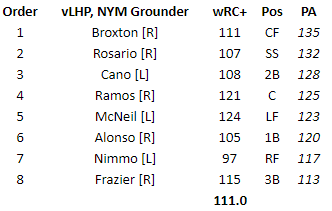
There are some obvious potential flaws and over-simplification here. McNeil projects as a wRC+ of 142/124 vRHP/vLHP respectively which I think we can all agree is ripe for some regression, and Todd Frazier is still sitting on a career 115/107 split – a career which seems to be on the downslope. Yet, at the same time, Jed Lowrie is using his career wRC+ of 106 though he has posted back-to-back seasons around 120 and anyone watching Amed Rosario’s second half is definitely dreaming bigger than a 75/107 wRC+ split. The last bit of accounting is to add in those last missing at-bats (6% of our original share of at-bats in the 1-8 spots, as well as PH appearances for the pitcher in late game situations (I estimated 1.5 PA per game @ 162 games) which totalled to roughly 575 at bats. For simplicity, and due to the fact that both managers can play the replacement game with relievers and pinch hitters late, I assumed a split of roughly 70% of additional PAs would come against righties while 30% would come against lefties. Here is the breakdown of added plate appearances, focused on defense and/or missed starts in lineup:
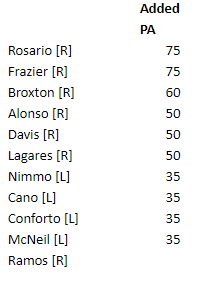
* * * * * * * * *
This Fan Shot was contributed by MMO community member and die-hard Mets fan Ron Henry. Have something you want to say about the Mets? Send your article to [email protected] or use this Contact Form. Or ask us about becoming a regular contributor.


